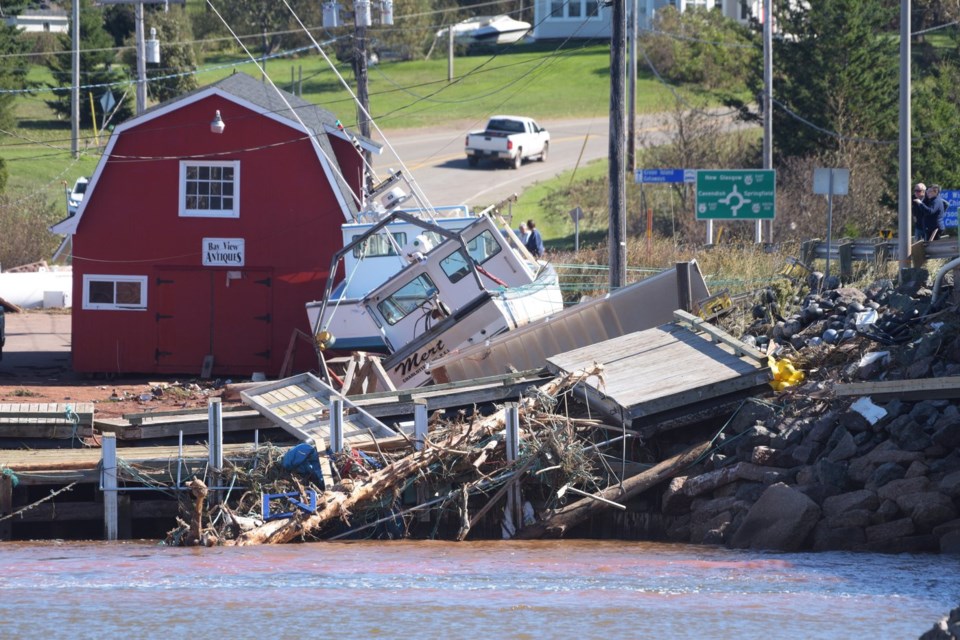CHARLOTTETOWN — Prince Edward Island forests emit more carbon than they absorb, a consequence of the damage caused after post-tropical storm Fiona made landfall almost two years ago.
But one expert says the Island's carbon emissions from rotting trees aren't necessarily an added climate change concern.
In a new report, the provincial government says all the fallen trees from the September 2022 storm are decomposing and releasing carbon dioxide into the atmosphere. About 9.4 per cent — approximately 24,300 hectares — of forested area in the province was significantly impacted by the storm, the report says, adding that it will take at least 50 years for forests to be restored to their pre-Fiona state.
Due to all the decomposing trees, the total forested area on the Island is emitting more carbon than it absorbs. Fiona affected the entire Island when it made landfall on Sept. 24, 2022, though forests in the east and on the North Shore were hit the hardest.
Matt Angus, P.E.I. forestry inventory analyst, says the number of trees Fiona knocked down represents eight to 10 years’ worth of what the province's logging sector harvests.
Projections indicate the Island could return to a carbon sink — where trees absorb more carbon dioxide than they produce — around 2045, he said.
But Anthony Taylor, a forestry and environmental management professor at the University of New Brunswick, said it is “pretty standard” for forests to become carbon sources after significant blowdown. A period of growth usually follows decomposition, he added.
“It’s natural … forests are very dynamic and when it comes to the way natural disturbances impact the forest, it is very cyclical, especially when it comes to carbon,” he said in an interview.
Taylor said that carbon emissions from felled trees are significantly less than emissions from forest fires.
“When you have fire occur, you have that combustion taking place and carbon being released right away," he said. "With wind, it tends to knock all the trees down and … a lot of them die and begin to decompose, but the decomposition is a lot slower."
With a windstorm, carbon is still locked up in the branches, leaves, tree trunks and roots, Taylor explained. While leaves and branches decompose very quickly, the carbon in trunks and roots takes years to be released, if ever. Within 10 to 20 years, the carbon that’s emitted is reabsorbed by new growth, he said.
Angus said a major initial concern for P.E.I. was that the land covered by dead trees could become a breeding ground for future fires with dry brush on the ground, but he said that concern is diminishing quickly as branches and leaves decompose. As well, the forestry industry has worked hard to salvage some of the wood that came down, he added.
“It’s got a pretty short window of usability before it gets just a little bit too deteriorated where it can’t really be turned into long-lasting wood products,” he said.
Angus said the province is monitoring regeneration closely to keep tabs on when forests will become suitable for large-scale industrial harvests again. And forest officials, he added, are noticing promising regeneration on the ground, with many areas showing bright green growth already.
This report by The Canadian Press was first published Aug. 29, 2024.
—By Cassidy McMackon in Halifax
The Canadian Press



